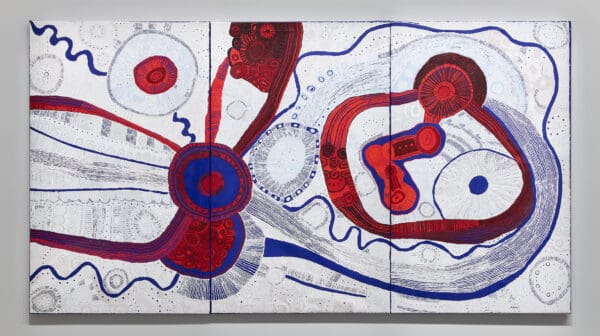
Life Cycles with Betty Kuntiwa Pumani
The paintings of Betty Kuntiwa Pumani form a part of a larger, living archive on Antaṟa, her mother’s Country. More than maps, they speak to ancestral songlines, place and ceremony.
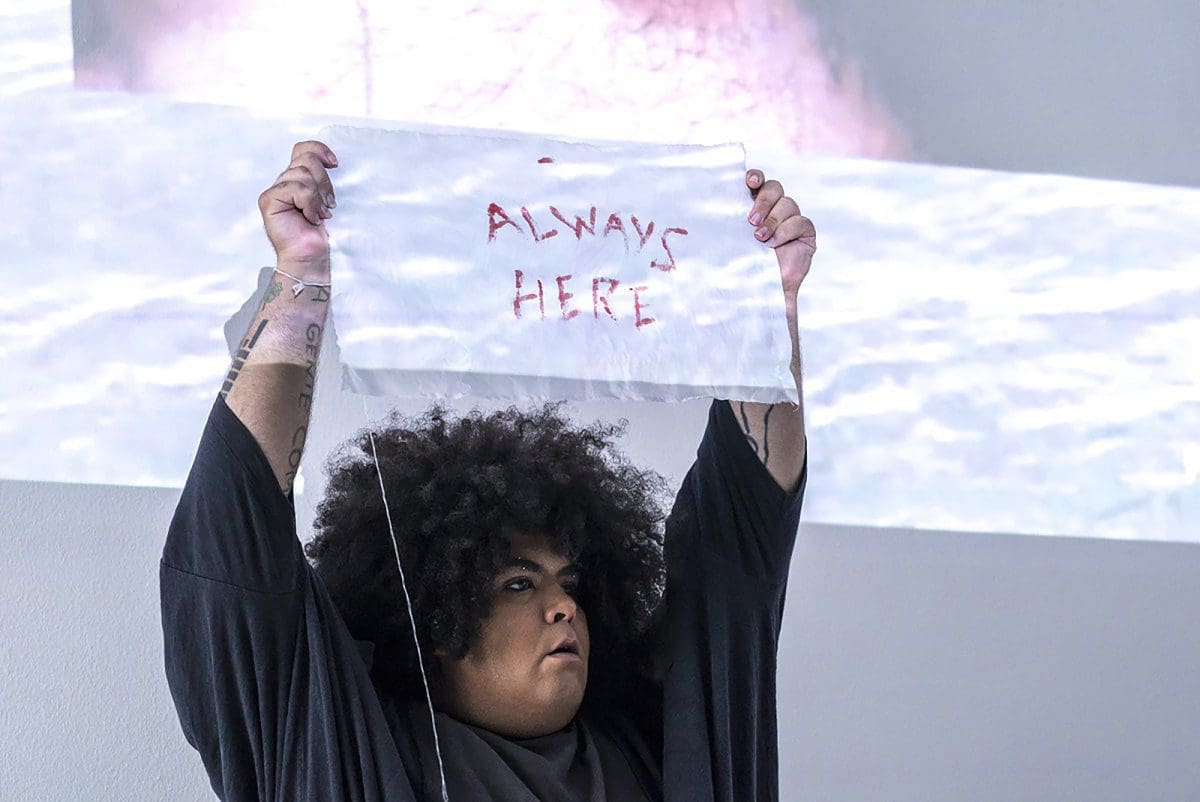
Jota Mombaça, How old is suffering? (2018), performance, photograph by Anna Cerato
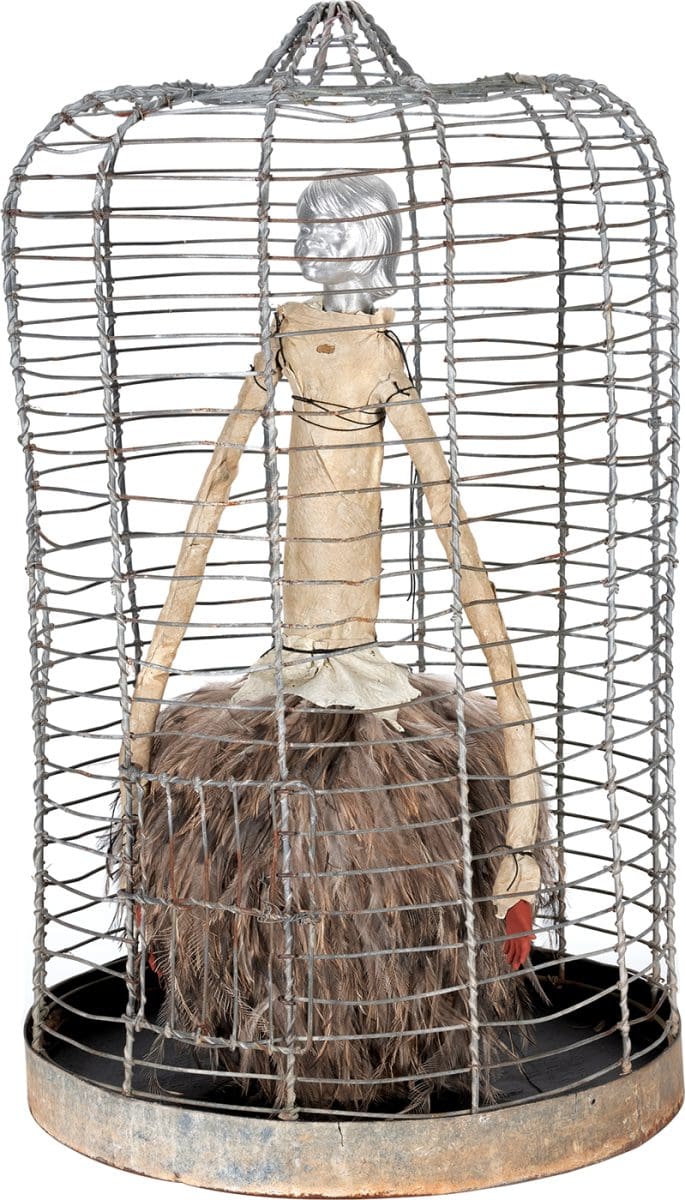
Karla Dickens, A Dickensian Circus: Cruel buffoonery, 2019, mixed media, 30 x 60 x 60 cm, photograph by Mick Richards, courtesy of the artist and Andrew Baker Art Dealer, Brisbane.
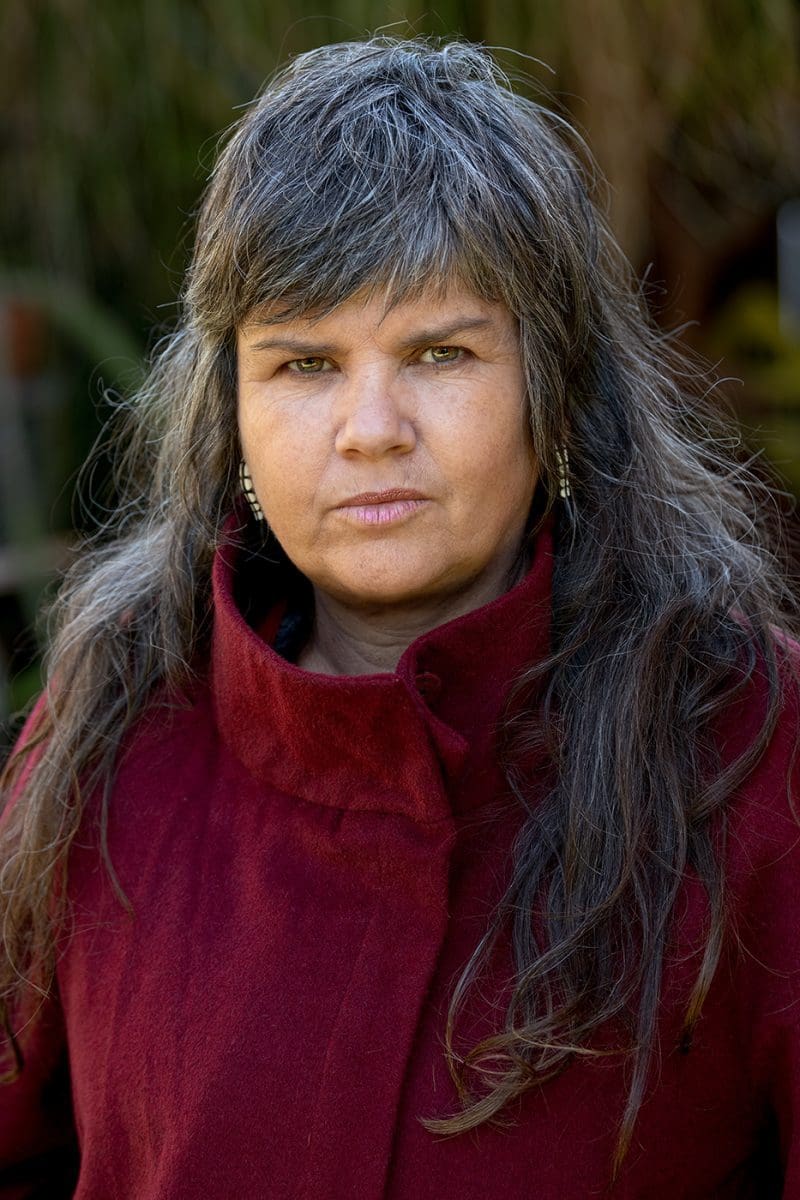
Karla Dickens, photograph by Mick Richards.
At the launch of the comprehensive list of 98 artists, creatives and collectives participating in the Biennale of Sydney in 2020, which will be led by the ideas and work of First Nations artists, Brazilian non-binary performance artist Jota Mombaça stands on a stage at Little Bay where 50 years ago Christo and Jeanne-Claude wrapped the coastal cliffs. A La Perouse Aboriginal Land Council elder has just reminded us that the coast also brought colonisers who introduced smallpox, killing the Indigenous people of Sydney.
Mombaça, whose pronouns are they, them and their, reads a poem to remind the audience that the “genocide” of black and other marginalised bodies continues.

The 28-year-old artist, who splits their time between Lisbon and Berlin, usually composes in another coloniser’s language – Portuguese – but is reading in English today.
“After being butchered, a body can never have its wholeness back,” recites Mombaça from “The Enciphered Letters to Castiel Vitorino Brasileiro”, a tribute to a young Brazilian black trans artist whose work Mombaça finds powerful. The poem speaks of violence and running “towards the apocalypse,” warning how “every living brown bicha” must remain alert as a condition of living.
Mombaça describes themselves as a “non-binary bicha.” Bicha has traditionally been a Brazilian slur used against homosexual men. “For me, it is a gender position, and that’s why I reclaimed this word as a way I want to present myself as a person.” Mombaça, who has an Afro-Indigenous heritage, wants to create a nexus between their own trans position and the struggles of First Nations and black communities.
Mombaça’s work for the Biennale is still being composed but will articulate connections between trans people’s struggles and the struggle of the earth. Brazil has “huge rates of killings of bichas, trans women and lesbians,” the artist explains. “We have a lot of queer phobia, but we have been growing some networks, creating some spaces and articulating a culture that somehow is trying to challenge that.”
Earlier this year in Rotterdam, Mombaça performed It Came Time When the Lights of This Epoch Were Lit Everywhere, a piece about Brazil’s “post-slavery subjectivity” that “has tried to erase the marks of the history of blackness in Brazil.”
“To be black in Brazil is necessarily to be at risk, and it’s very important to mark, especially now with the rise of the new president [Jair Bolsonaro]. The most interesting thing about Brazil today is how it created a fiction of sociality but erases it,” say the artist. “We have an informal apartheid scenario that makes it hard to grasp and name what it is.”
Artistic director Brook Andrew says Mombaça “creates their own futures of power” with their art “acknowledging the disasters of the past and inviting us to go on journeys of remembering so that we can indeed go on to something else that is not overall a disaster.”
Another Brazilian artist, Rosana Paulino, will present work representing dismembered hands and bodies that will recall the “shocking slave history of Brazil.”
Andrew has given the 22nd Biennale of Sydney theme a Wiradjuri word, Nirin, from his mother’s tongue, which roughly translates to ‘edge’. “It’s really our centre,” he explains; Nirin will “demonstrate that artists and creatives have the power to resolve, dismember, imagine futures of transformation and resetting the world.”
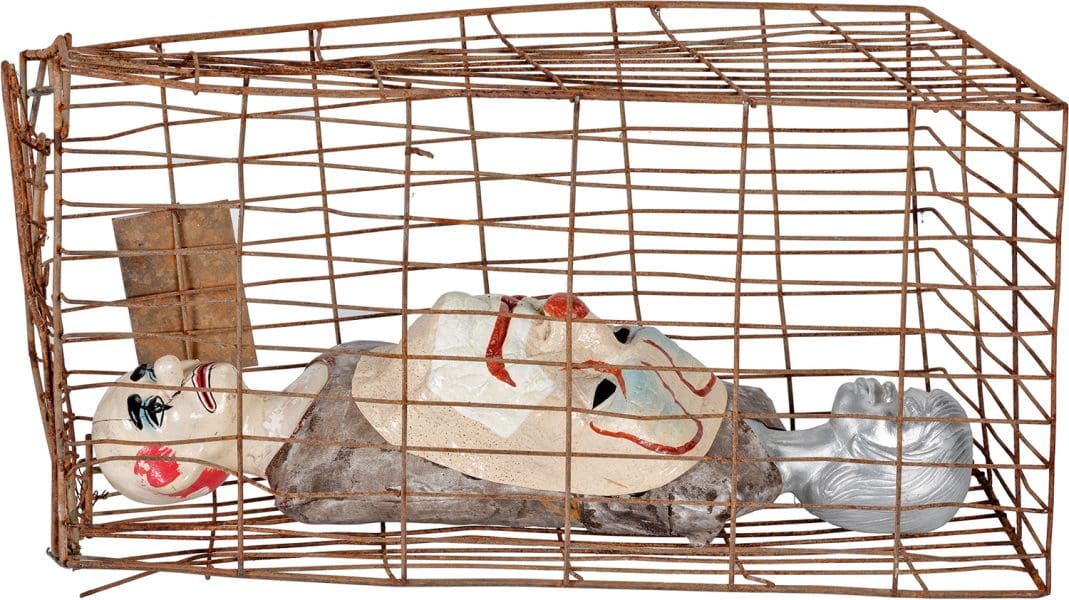
Another Wiradjuri artist, Karla Dickens, will create an immersive installation that evokes sovereignty, says Andrew. Katej artist Warwick Thornton, director of feature films Samson and Delilah and Sweet Country, will meanwhile present a “hyperactive film; a visual romp retelling the story of Ned Kelly in a modern context.”
NIRIN: Biennale of Sydney
Various venues
14 March – 8 June 2020